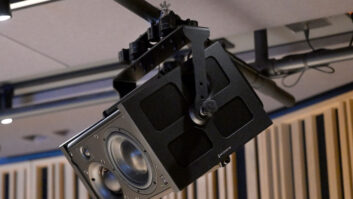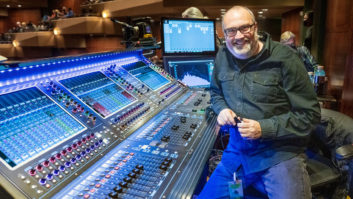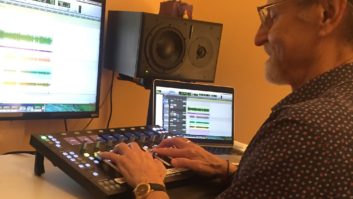
Many of the questions I receive on a regular basis involve the often-frustrating process of searching for replacement parts. This month’s reader question comes from someone who is also a friend. Darron Burke of Makeshift Studio teamed up with local Boston-area artist/technician Kevin Micka after a series of emails did not reveal the hidden secrets of a troubled unit.
Kevin’s Question: How do I find compatible replacement parts for my dbx 165 compressor/limiter?
I did my best to provide several options. But before getting specific on sleuthing for the dbx, a bit of background is in order. Back in the day, vacuum tube and semiconductor cross-reference books ranged in size from small “bibles” to big-city phone books, then evolved into software (on floppy) and eventually migrated to the Net. Google and other search engines are often a better resource than dedicated tools, provided you know what not to click. What you really want is a free “datasheet” from the device manufacturer that offers pin-out and operating parameters. Manufacturers include National Semiconductor, ON Semi (formerly Motorola), Fairchild and Texas Instruments (TI), to name a few.
Figure 1: This multimeter tests diode and static transistor hFE.
Zillions of semiconductor devices have been made during the past 60 years. The country of origin is often identifiable by the prefix: 2N (U.S.), 2S (Japan) or BC (Europe). Transistors have three legs—Base, Emitter and Collector—and come in all shapes and sizes to accommodate a wide range of power and gain requirements. Old parts are discontinued and replaced by equal or better parts, which can be a challenge for search engines because the improved specs are not easily reconciled against the original. When in doubt, the original’s pin-out can often be determined by following circuit board traces back to the next component. Make a drawing and compare with the replacement part.
SEMICONDUCTOR TEST
Nearly all multimeters have a diode-junction test mode. (See Fig. 1.) A transistor is essentially two diode junctions linked at the Base. Some multimeters have a transistor socket that tests for static hFE. With the multimeter in Diode Test mode, connect the probes to the Base and Emitter of a known-good transistor. If there is no reading, reverse the probes for the transistor polarity (NPN or PNP). When correct, the junction voltage appears (0.3 volts for germanium, 0.6V for silicon). The voltage is temperature-sensitive and not exact. Now move the Emitter probe to the Collector and get a similar reading. There should be no reading when the probes are reversed. There should also be no reading between emitter and collector in either direction (polarity). When all else fails, read the multimeter manual.
Figure 2: Two schematic excerpts, same circuitry. The left version has actual op amp and transistor part numbers, the right version has factory part numbers.
BACK TO THE QUESTION
dbxpro.com has an extensive collection of “classic” and “vintage” manuals, and product manuals from that era often included schematics. The schematic downloaded from the dbx site differed from the one in my library, in that all of the IC op amps and transistors had factory part numbers, which are not at all compatible with cross-reference libraries and datasheets. The one in my collection had standard part numbers. Neither schematic has great resolution—I was not able to “decode” the LM308’s factory number. This is not a huge problem because the part numbers are usually on the components themselves, and so with the schematic and the unit side-by-side, you can sort it all out. (See Fig 2.)
The parts in question were the op amp OA11 (LM308) and transistor Q13 (dbx142081 = BC453). As mentioned in my blog, the National Semiconductor site had the original LM308 datasheet and a recommended replacement and its datasheet. But Kevin and I both had trouble finding any BC453 info.
I scrolled through Google’s search results until something promising showed up at alltransistors.com, which is a new site to me. There was no “official” datasheet, but the operating parameters in the table have nearly everything you need to know about the BC453, except for its pin-out, which cannot be assumed (alltransistors.com/transistor.php?transistor=23213). By the prefix we know it’s a European part—or is it? The manufacturer is listed as Toshiba. The BC453 is a silicon NPN transistor in a TO-92 package. At 30V max (between collector and emitter), it’s a low-voltage device capable of 300 milliWatts (mW) dissipation. It has a “forward-current transfer ratio” (aka, “beta” hFE or current gain) of 110 minimum.
I had no luck finding the BC453 on Toshiba’s site, but here’s where it gets easier. Most parts distributors—like Allied, DigiKey and Mouser—include datasheets on their sites. Their geeky search engines suck so avoid narrowing the search parameters too much; it’s better to have several pages to sort through than no pages at all. None of the suppliers listed the BC453, and the first narrow search on Allied yielded only an NTE 289. (NTE’s numbers do not relate to device manufacturer’s numbers.) Digi-Key provided at least three possible contenders—2N4401, 2N3904 and MPS-A06—that Allied also carried after I relaxed the search parameters. From Mouser, the BC-548 was added to the list. All have better specs than the original, beta being the one parameter that should be close to the original. All datasheets were downloaded into my library.
One final note about the dbx 165: The sidechain goes through two switches! On most signal processors, the audio signal path (AC) is pretty straightforward, but the sidechain comprises DC circuitry that is not as easily negotiated. (The sidechain is what turns the audio signal into a control voltage that can be manipulated by ratio, attack and release.) We know what audio sounds like through a 35-year-old switch or pot, but we can’t hear what happens to this important DC signal. From OA11 (LM308), the signal goes to OA10 (LM311 for attack/release) and then through the Auto-Manual switch (ouch-1), followed by OA14, OA4 and the master/slave switch (ouch-2) before the journey ends at the VCA.
Ask Eddie Ciletti whatever you want at blog.mixonline.com/mixblog/category/ask_eddie.







